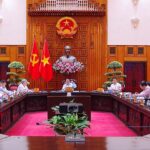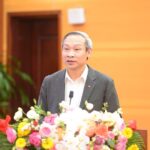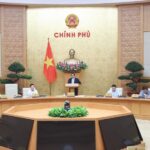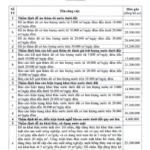At the time of national reunification in 1975, Vietnam’s total rice production stood at only 5.49 million tons, with a yield of 21.1 tons/ha. With a population of 46.5 million, the country’s per capita food production was a mere 243.3 kg, including just 118 kg of rice per person. Consequently, in 1975, Vietnam had to import 880,000 tons of rice-equivalent food.
In terms of livestock farming, the total meat production was approximately 450,000 tons, mostly from low-yield native breeds.
Agricultural exports in 1976 consisted of a limited range of products with small volumes and values (8,200 tons of coffee, 7,900 tons of tea, 27,800 tons of rubber, and some fresh and canned fruits), totaling less than $100 million. In contrast, Vietnam faced a significant trade deficit in food and agricultural products.
Over the past 50 years, Vietnamese agriculture has made remarkable progress, transforming from a state of significant deficit to ensuring food security for its people and contributing to global food security as one of the world’s leading rice exporters. This achievement has allowed Vietnamese agriculture to evolve from rice monoculture to relatively comprehensive agricultural development.
THE JOURNEY OF 50 YEARS
From 1976 to 1981, Vietnam had to import over 1 million tons of food annually, and the poverty rate was nearly 70%. Thanks to appropriate policies and strategies, Vietnamese agriculture gradually harnessed its advantages in agricultural production, including rice cultivation, maintaining stability and ensuring domestic food supplies.

In 2024, Vietnam’s total grain production reached 48 million tons, including 43.5 million tons of rice and over 4.4 million tons of corn, nearly nine times higher than in 1975. This development has enabled the agricultural sector to meet the consumption needs of nearly 100 million people in Vietnam, with surpluses exported to support global food security.
Regarding perennial industrial crops, starting from a low base in 1975, Vietnam now produces, on average, 1.3-1.7 million tons of coffee, 170-200,000 tons of pepper, 360-400,000 tons of cashew nuts, over 2.1 million tons of various fruits, and 1.3-1.5 million tons of rubber annually. In the livestock sector, total meat production in 2024 reached 8.1 million tons, nearly 20 times higher than in 1975.
With renewed policies and development, Vietnam has truly become an agricultural powerhouse. In 1986, agricultural export value stood at only $486.2 million, increasing to $4.2 billion in 2000 and a remarkable $62.5 billion in 2024, 125 times higher than in 1986 and 625 times higher than in 1975. During the period from 1986 to 2024, the growth rate of agricultural export value averaged 13.5%/year. Notable high-value export commodities in 2024 included wood and wood products ($16.2 billion), seafood ($10 billion), fruits and vegetables ($7.12 billion), rice ($5.75 billion), coffee ($5.48 billion), cashew nuts ($4.48 billion), rubber ($3.37 billion), and cassava ($1.13 billion), among others.
According to the World Bank (WB), in 2023, Vietnam’s agricultural GDP reached approximately $22.3 billion, accounting for 0.83% of global agricultural GDP, ranking fifth in the world. Several Vietnamese agricultural products hold prominent positions in terms of global production volume: pepper (first), coffee (second), rubber and cashew nuts (third), rice (fifth), and tea (sixth). Additionally, some Vietnamese agricultural products have a significant market share in global trade, such as cashew nuts (60%), pepper (32.2%), seafood (28.8%), wood products (24.3%), rubber (15%), coffee (14.1%), rice (10.3%), tea (8.5%), and fruits and vegetables (7.8%).
Agriculture remains the backbone of Vietnam’s economy, the foundation for development and social stability, and the livelihood of most rural residents. Today, the agricultural sector is committed to reducing greenhouse gas emissions through green agriculture, forest protection and development, and environmentally friendly practices that do not deplete natural resources or contribute to the greenhouse effect. Thanks to the implementation of numerous green and clean agricultural production models, the proportion of clean and traceable agricultural and aquatic products is increasing.
Vietnamese agriculture also contributes to ecological conservation, creating ecological spaces that foster organic connections between humans, animals, and plants, ensuring human health, and nurturing healthy soil and crops. Healthy soil leads to robust crops, which, in turn, contribute to the well-being of humans and animals.
Along with the renewal policies of the Party and the State and the efforts of the entire agricultural sector, Vietnamese agriculture has gained significant global recognition. However, challenges and limitations remain, requiring focused attention in the coming years. Objective factors, such as resource depletion, environmental degradation, climate change, market fluctuations, and shifting global consumption trends, are already impacting and will continue to influence Vietnamese agricultural production.
TOWARDS ECO-AGRICULTURE AND LARGE-SCALE PRODUCTION
To maintain and enhance this position, Vietnamese agriculture will continue to embrace renewal in line with current major policies and strategies, particularly the spirit of Resolution No. 19-NQ/TW of the 13th Party Central Committee issued on June 16, 2022, “On agriculture, farmers, and rural areas until 2030, with a vision to 2045,” and Decision No. 150/QD-TTg dated January 28, 2022, of the Prime Minister approving the “Strategy for Sustainable Agriculture and Rural Development for the period of 2021-2030, with a vision to 2050,” towards eco-agriculture, modern rural areas, and civilized farmers.
In this framework, farmers are the primary agents and the center of agricultural, rural economic development, and new rural construction. Agriculture will develop effectively and sustainably, integrating multiple values, enhancing added value and competitiveness, in conjunction with promoting the development of post-harvest processing and preservation industries and expanding domestic and foreign markets for agricultural products, ensuring food safety and national food security, and protecting the ecological environment. Encouragement is given to the development of green, organic, and circular agriculture.
A significant shift in mindset is required, moving from agricultural production to agricultural economic development linked to market demands. Regional advantages, local initiatives, and the organization of agricultural production and business based on value chains, scientific and technological foundations, and innovation are emphasized.
The vision for 2045 is oriented towards eco-agriculture, large-scale commodity production with high added value, strong linkages with domestic and foreign markets, modern post-harvest processing and preservation industries, and the leading global export position of numerous agricultural products.
Member of the Party Central Committee, Vice Chairman of the National Assembly
The full content of this article was published in the Vietnam Economic Review, Issue 17+18-2025, released on April 28, 2025. Please visit the following link to read the complete article:
https://postenp.phaha.vn/tap-chi-kinh-te-viet-nam/detail/1374
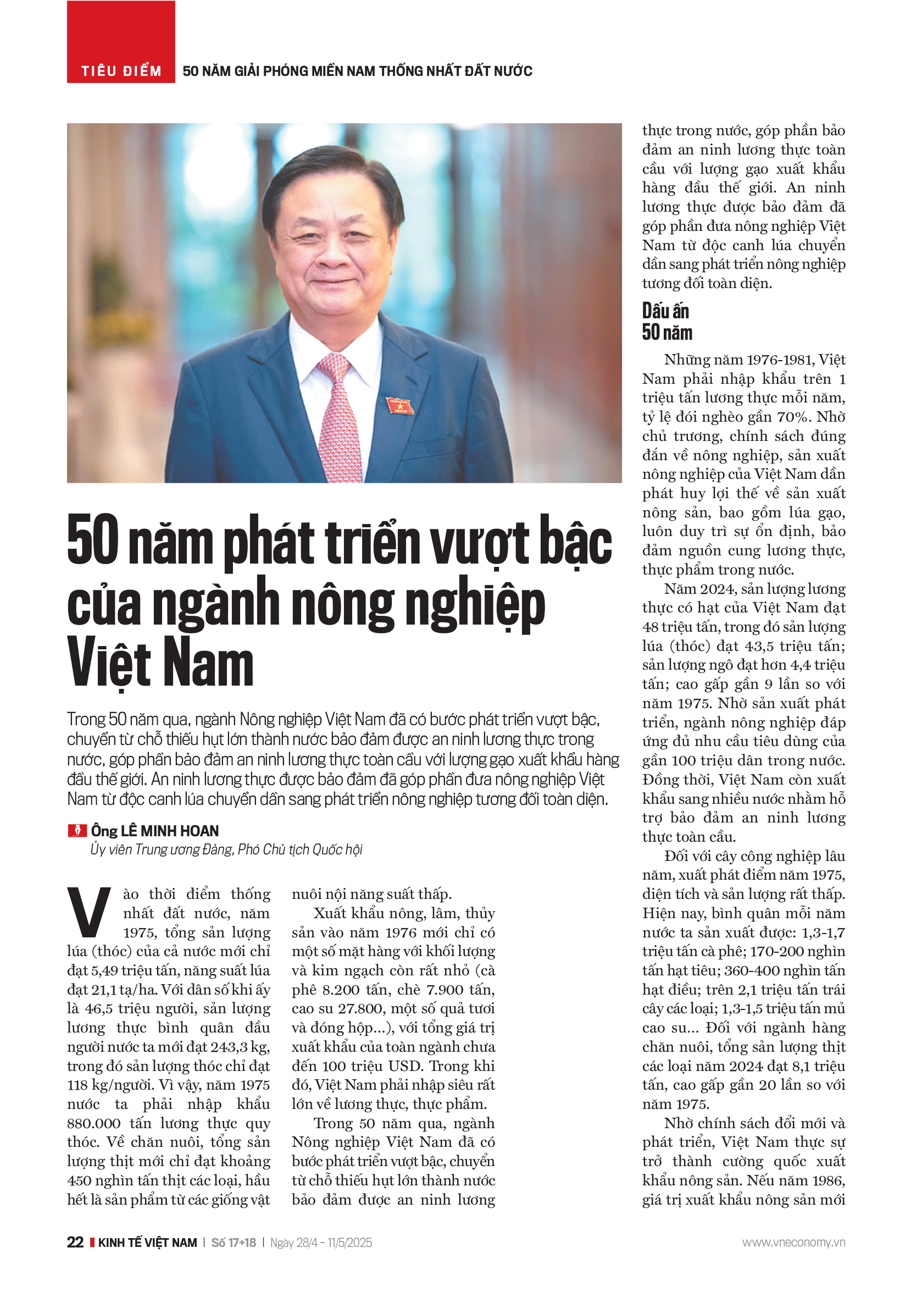
Prime Minister Seeks Feedback on Four Key Issues for the Ninth Session of the National Assembly
On April 27, Prime Minister Pham Minh Chinh chaired a meeting of the Government’s Standing Committee to discuss and provide feedback on four crucial agenda items for the upcoming 9th session of the 15th National Assembly, which is set to commence in early May 2025.
The Prime Minister Chairs a Cabinet Meeting on Five Key Legislative Projects for Submission to the National Assembly
On the morning of April 18, Prime Minister Pham Minh Chinh chaired the second Government meeting on law in April 2025. The meeting discussed several important issues in preparation for the National Assembly…
The New Proposal: A Comprehensive Review of Water Usage and Extraction Fees
A proposal to increase fees for six water-related services, including extraction and usage, by a significant margin of 40-102%.
The six revenue-enhancing adjustments: Appraisal of groundwater exploration proposals; evaluation of exploration results and groundwater reserve estimates; assessment of current groundwater extraction practices; evaluation of large-scale groundwater drilling qualifications and credentials; appraisal of surface water extraction and utilization proposals; and finally, the appraisal of seawater extraction and utilization plans.


